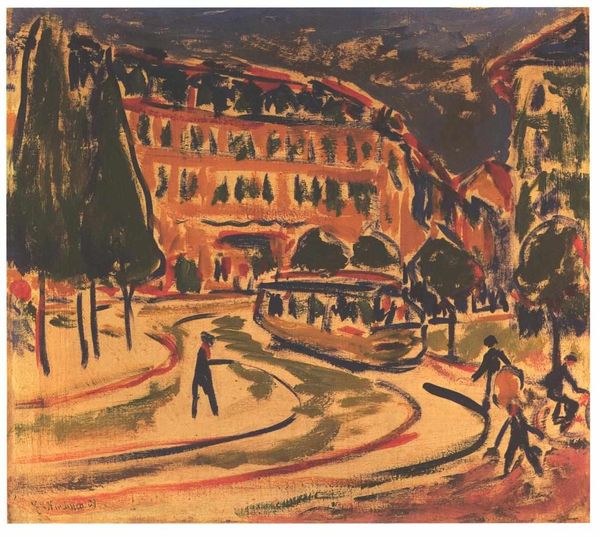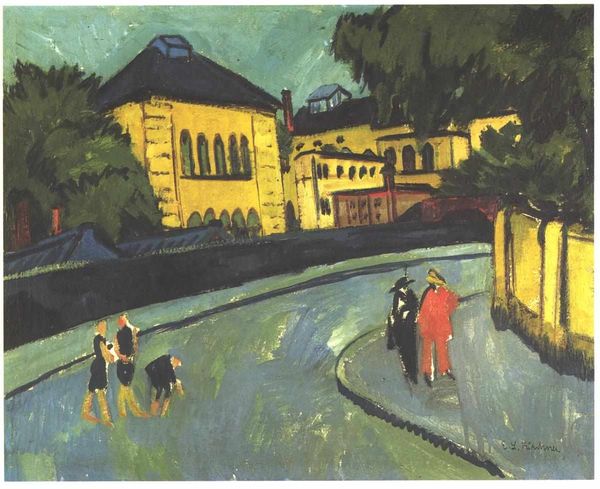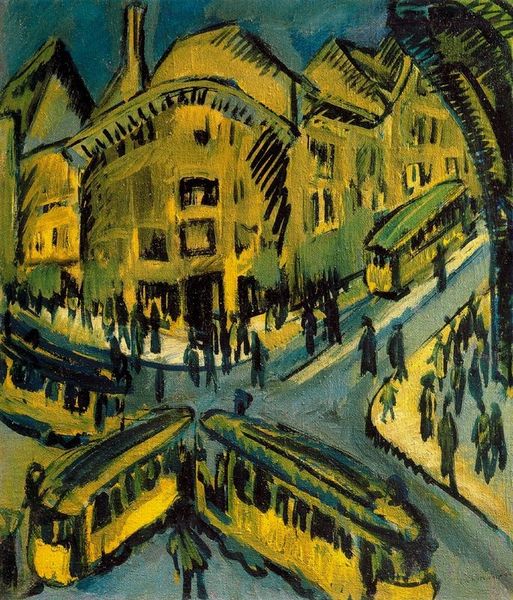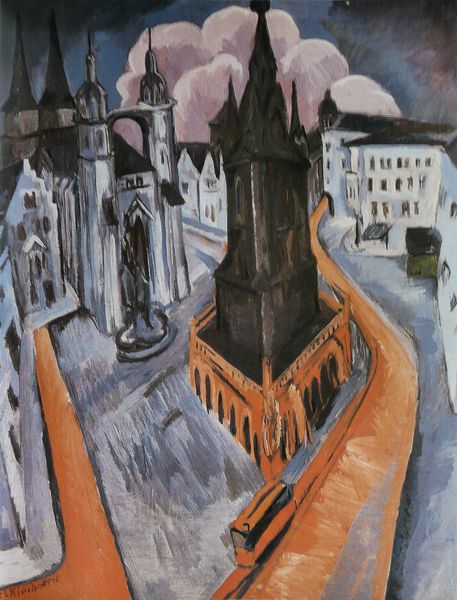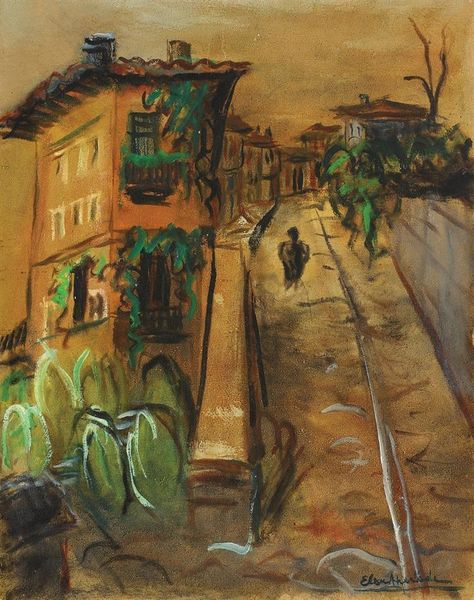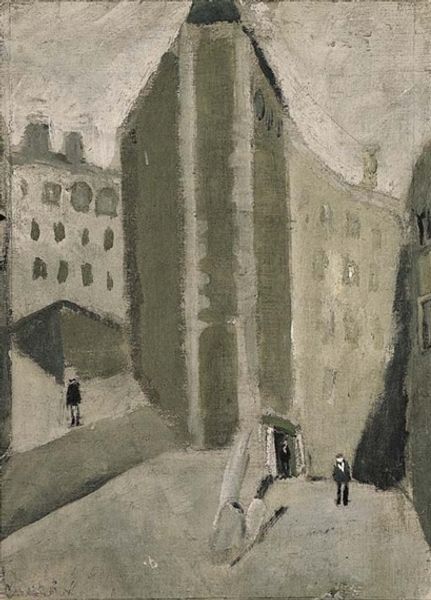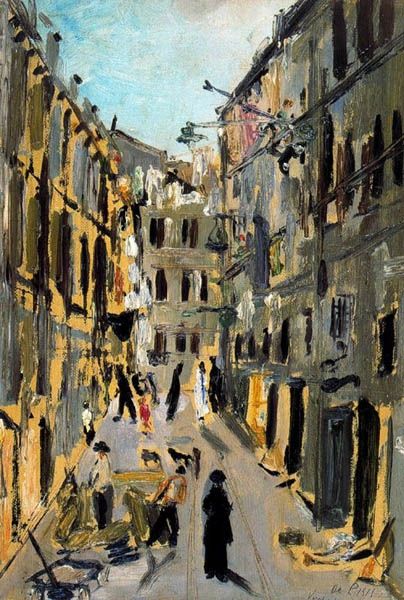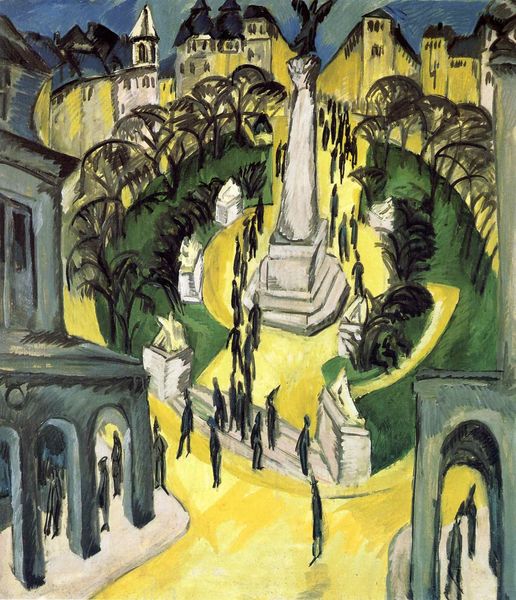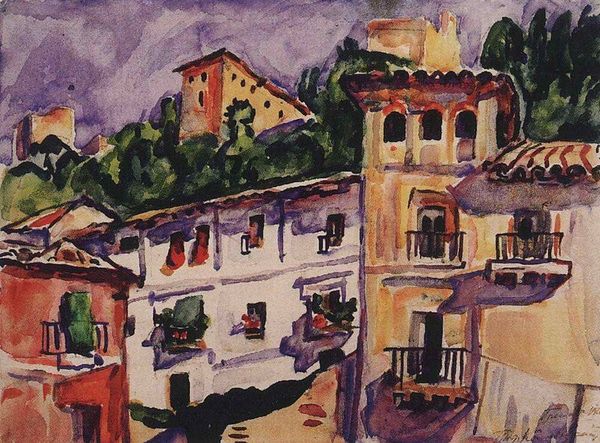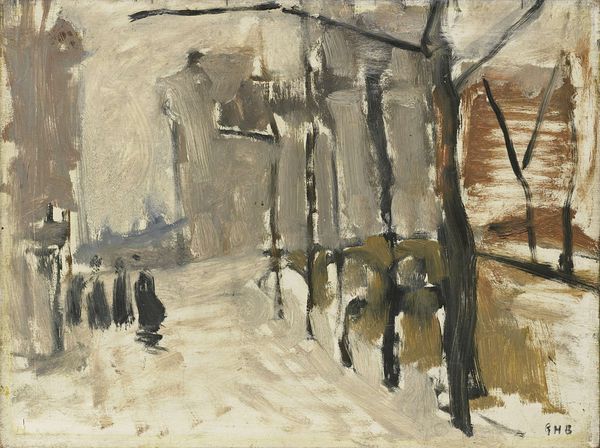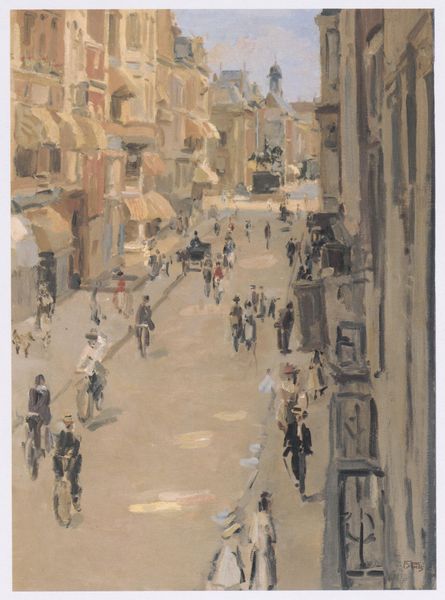
painting, oil-paint
#
tree
#
painting
#
oil-paint
#
german-expressionism
#
house
#
expressionism
#
surrealism
#
cityscape
#
street
#
building
Copyright: Public domain
Curator: This is Ernst Ludwig Kirchner’s "Street at Stadtpark," painted in 1913 using oil on canvas. What are your initial thoughts? Editor: It feels like a scene on the verge of collapse. The warped perspective and sickly colors evoke a strong sense of unease, an alienation that extends beyond the figures present. Curator: Absolutely. Kirchner, as a prominent figure in German Expressionism, uses these visual elements to reflect the social anxieties prevalent in pre-war Germany. He wasn't just representing the world, but rather externalizing psychological states tied to the commodification and rapid urbanization of the time. Think about the role of the *brücke*, or bridge. Editor: Yes, that’s visible through his distinctive brushstrokes. Look at how the lines create this unstable geometry, especially in the buildings and street itself. What about the effect and labor that creates that aesthetic, what are his choices showing us about materiality itself? Curator: The speed and agitation come from deliberate material and textural decisions: cheap paints, quick drying times, everything adding to a sense of impermanence mirroring an exploding population creating intense competition for urban space, all things we see through this manipulation. Editor: I think the colors reinforce this idea as well. That pallid white and sickly green dominating the scene seem to drain life, not express it. How do the social aspects come in as well? Curator: These choices come in because of the world he saw, a reflection of anxiety within those crowded urban spaces; spaces rife with a fear that capitalist exchanges, cheap goods, alienation, would destroy what he knew. We understand those things through materiality and choices, seeing the whole canvas as reflecting this world. Editor: So, in looking at the whole piece—a fever dream of industrialization through its fractured composition and material angst. We can examine not just *what* it depicts but also *how* the very means of production express societal upheaval. Curator: Precisely! By paying attention to not just subject but production too we can better understand pre-war Germany.
Comments
No comments
Be the first to comment and join the conversation on the ultimate creative platform.
